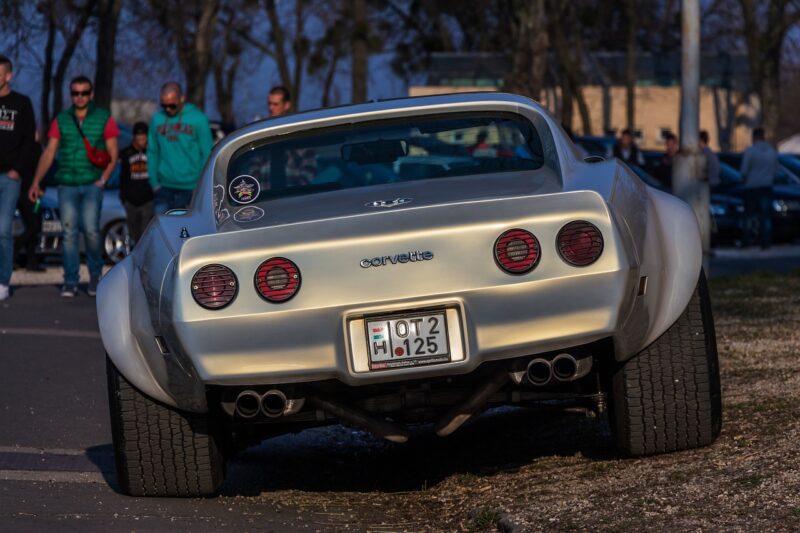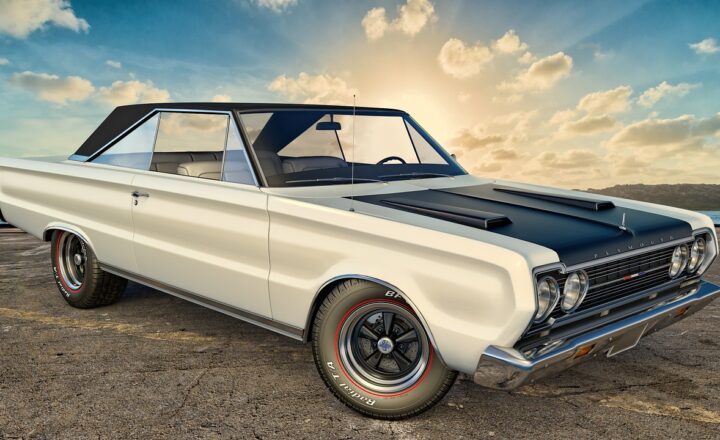Tracing the Evolution of the Chevrolet Corvette: America’s Beloved Sports Car
November 13, 2024

The Chevrolet Corvette, a name synonymous with American automotive prowess, has captivated car enthusiasts since its debut in 1953. As a symbol of innovation, speed, and design, the Corvette has remained a mainstay in the sports car market for decades. Join us as we trace the evolution of this iconic vehicle, examining each generation’s unique features, historical significance, and the technological advancements that have ensured its place in automotive history.
1. The Birth of an Icon: C1 (1953-1962)
The first generation of the Chevrolet Corvette, known as the C1, was introduced at the 1953 Motorama as a prototype. Designed by Harley Earl, the Corvette showcased a fiberglass body, which was revolutionary at the time. The original Corvette featured a 235 cubic-inch inline-six engine, producing 150 horsepower.
With its sleek lines and two-tone color options, the C1 quickly gained popularity. In 1955, Chevrolet upgraded the Corvette with a V8 engine, the 265 cubic-inch, which enabled the car to hit 0-60 mph in just 8.5 seconds. The introduction of the V8 catapulted the Corvette from a stylish cruiser to a serious performance vehicle.
Later models also featured the legendary fuel injection system, making the Corvette a formidable presence on the race track.
2. Entering the Racing Scene: C2 (1963-1967)
The second generation, C2, was launched in 1963 and featured a completely new design with a more aggressive stance and distinct split rear window. This generation marked a significant step forward in terms of performance and handling due to its advanced suspension system and refined aerodynamics.
Equipped with the new 327 cubic-inch V8 engine, producing up to 375 horsepower, the C2 was designed with both racing and street performance in mind. The Corvette Sting Ray model became famous in the racing world, also thanks to its success in the SCCA racing series, establishing the Corvette as a force to be reckoned with.
3. American Muscle: C3 (1968-1982)
The C3 Corvette, produced from 1968 to 1982, brought with it a more muscular design, characterized by its curvy lines and sharp angles. This generation introduced the iconic removable T-top, enhancing the driving experience and giving enthusiasts the ability to enjoy the open air.
During its tenure, the C3 underwent numerous updates, including engine options ranging from the standard small-block V8 to the formidable LS6, which delivered an impressive 425 horsepower. However, it was during the mid-1970s that emissions regulations and rising insurance costs began to affect performance. As a result, the C3’s output dwindled, leading to a decline in performance enthusiasts’ patronage.
4. A New Chapter: C4 (1984-1996)
The fourth generation, known as C4, marked a significant turning point for the Corvette. Launched in 1984, the C4 featured a complete redesign, emphasizing modernity and technology. The 1985 model introduced a new 350 cubic-inch engine, and with the inclusion of Digital Dashboard technology, it set new standards for sports cars.
In 1990, the ZR-1 package was introduced, equipped with a 375-horsepower LT5 engine designed by Lotus. The C4’s performance capabilities and sleek aesthetics brought Corvette back into the spotlight, showcasing a renewed focus on speed and handling.
5. Technology Meets Performance: C5 (1997-2004)
With the introduction of the C5, the Corvette truly embraced modern technology. The C5 was built on a new platform with a more rigid structure and improved aerodynamics. It boasted a 5.7-liter LS1 V8 engine, producing 345 horsepower, and an innovative hydroformed frame, enhancing its performance characteristics.
The C5 was also hailed for its superior handling and ride quality, thanks to its all-new independent rear suspension. In 2001, the Z06 variant broke the mold with a supercharged 5.7L V8 producing 385 horsepower, further solidifying the Corvette’s status in the performance car market.
6. Pushing Boundaries: C6 (2005-2013)
The sixth generation, C6, was unveiled in 2005 to critical acclaim. Offering a more aggressive design with exposed headlights and a lower profile, the C6 continued the Corvette legacy of performance. The Z06 variant debuted with a 505-horsepower 7.0L LS7 V8 engine.
The C6 introduced advanced technology features, including a head-up display and a refined infotainment system. In 2009, the ZR1 model, which featured a supercharger, cranked out an astonishing 638 horsepower, marking it as one of the most powerful production cars of its time.
7. A New Era: C7 (2014-2019)
The seventh generation, C7 Corvette, was launched in 2014 and signified a radical design overhaul from its predecessors. The C7 featured a bold, aggressive exterior with a driver-focused interior. The heart of the C7 was the 6.2L LT1 V8 engine, delivering 455 horsepower and 460 lb-ft of torque.
This generation further incorporated advanced materials, improving overall performance and efficiency. The Z06 model from C7 not only retained high performance but offered a supercharged variant with up to 650 horsepower.
With additional features like the Magnetic Ride Control suspension, the C7 flawlessly blended daily drivability with on-track performance.
8. The Newest Generation: C8 (2020-Present)
The most recent generation, C8, marks a historic shift as it is the first Corvette to come with a mid-engine layout. This redesign allows for improved weight distribution, enhanced handling capabilities, and exhilarating acceleration. The C8 is powered by a 6.2L V8 engine producing 495 horsepower in its base configuration, while the Z06 model boasts a staggering 670 horsepower.
The C8 Corvette showcases contemporary technology features, including advanced driver assistance systems and an immersive infotainment experience, striking a perfect balance between classic Corvette charm and modern capabilities. With the C8’s performance metrics, competitive pricing, and cutting-edge design, the Corvette remains a perennial favorite among sports car enthusiasts.
Conclusion
The Chevrolet Corvette stands as a testament to American sports car heritage. From its humble beginnings in the 1950s to the cutting-edge mid-engine marvel we know today, the Corvette has successfully evolved with the times while remaining true to its performance roots. Its ability to captivate the hearts of enthusiasts through generations speaks volumes about its design, innovation, and cultural significance.
As we look at the future of the Corvette, one thing is certain: it will continue to inspire and ignite passions in both new and long-time fans alike. The Chevrolet Corvette is not just a car; it’s a symbol of American freedom and automotive excellence.







